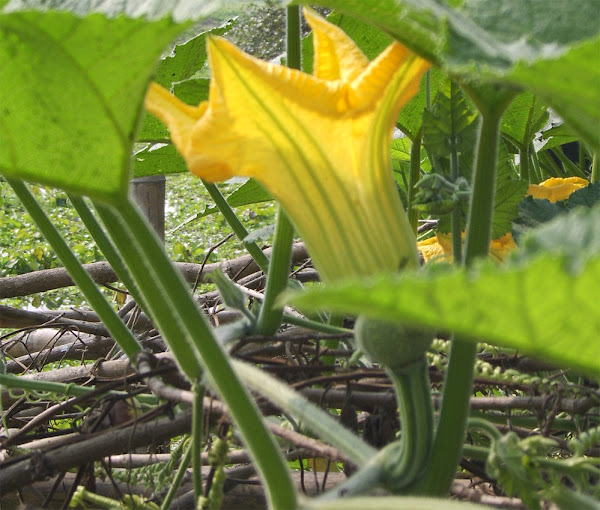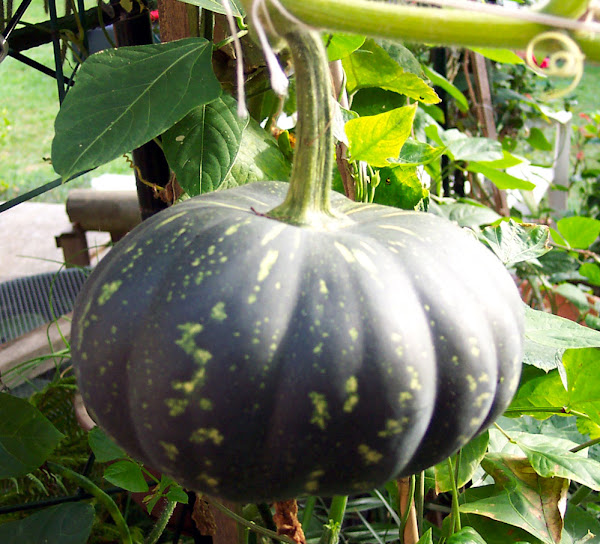Growing pumpkins organically in home garden is relatively easy as long as you provide the plants with enough nutrition and if you have enough space.
Pumpkins grow well in full sun and if you can provide them with a good growing medium. So the pumpkins are great for growing in your home garden.
Pumpkins are great for your health, and the best thing about growing pumpkins is that ‘all the parts of the pumpkin plants are edible including leaves, stems and flowers’.
So growing pumpkins in your home garden can be an excellent way for fulfilling your family vegetable demands.
How to Start Growing Pumpkins
If you are wondering how to grow pumpkins organically in home garden, then you should follow the steps mentioned below.
Here we are describing all about growing pumpkins from planting to caring and harvesting.
First, Choose a Variety
First of all, choose a good pumpkin variety for growing in your home garden.
Pumpkins are actually grown all around the world for many different purposes ranging from agricultural purposes (such as animal feed) to commercial and ornamental purposes.
So there are lots of different pumpkin varieties available throughout the world.
But you should choose the right variety which grows well in your area and also ensure it’s availability in your area.
Purchase Seeds
Purchase seeds from any of your nearest seed supply stores after choosing the variety. And if any of your relatives or friends used to grow pumpkins, then you can also collect seeds from them.
Best Time for Growing Pumpkins
Pumpkins actually grow very well in the warmer months. The seeds don’t germinate in cold soil.
So for growing pumpkins in the northern areas, don’t plant seeds until all danger of frost has passed and the soil has thoroughly warmed.
You can plant the seeds in the warmer months (summer season), if you live in the southern areas. Generally May to July is considered the best time for growing pumpkins.

Prepare the Soil
Pumpkins actually grow well in almost all types of soil. But they prefer well-drained soil which is rich with organic materials.
For growing pumpkins in your home garden, prepare the soil by adding lots of organic fertilizers such as well-rotted aged manure or homemade compost.
Planting
You can either plant seeds or transplant seedlings for growing pumpkins. Actually pumpkin plants do best if the seeds are planted directly in the ground.
But if you prefer transplanting, be sure to harden off the seedlings. You can plant the seeds in rows or ‘pumpkin hills’, which are small pitcher mounds. Following this system for planting seeds has many benefits.
In this hill system the soil will warm more quickly and the seeds will germinate faster, and doing this also helps with drainage and pest control.
You will need to prepare the hills prior to planting seeds with lots of organic materials. Space the hills 4-8 feet apart.
Then plant seeds around 1 inch deep into the soil. The seeds will germinate faster if you soak the seeds in clean water for 24 hours.
Caring
Pumpkins generally require less care as compared to many other vining plants.
Although taking additional care will ensure good growth of your plants which will ultimately maximize your production. Follow the pumpkin caring steps mentioned below.
Feeding/Fertilizing
Pumpkins grow very big and the plants are actually greedy and heavy feeders. They prefer very rich soil with an abundance of organic materials.
So you will need to fertilize the soil on a regular basis. Regular treatments of manure or compost mixed with water will ensure good growth of the plants.
Watering
Adequate watering is a must for growing pumpkins. Because, pumpkins require lots of water and they are actually very thirsty plants.
You must have to water the plants at least 1 inch per week. Water deeply, especially during fruit set.
Mulching
Mulching is required for retaining moisture in the soil. For this purpose, you can use dry leaves, grass cuttings, hay, straw etc.
Pruning
Pruning the vines of the pumpkin plants may help with space. Pruning will also allow the plant’s energy to be concentrated on the remaining vines and fruits.
Prune the fuzzy ends of each vine after a few pumpkins have formed, and this will stop vine growth (so that the plant’s energies are focused on the fruit).
Make Supports
Most of the pumpkin varieties can be trained upward on a trellis. So ensure you have the supports ready for the plants to climb on.
Remember, the pumpkins can grow very big so the supports need to be very strong.
Controlling Weeds
You should not spray anything or use any chemicals for growing pumpkins organically in your home garden.
You can easily get rid of the weeds in organic ways. Just using a hoe will be enough for controlling weeds. Mulching will also help for controlling weeds.
Pollinating
Your gardening friends, the bees will do these part in most cases. But if anyhow there are no bees, hand pollinating will help for boosting production.
Pumpkin plants produce both male and female flowers. The male flowers have a erect stem in the center of the flower (called stamen), which contains the pollen.
On the other hand, the female flower buds have a small pumpkin attached to the bottom the bud.

You just need to do, pick up a mature male flower and tear off it’s petals carefully without disturbing the stamen.
Then lightly shake and rub the stamen on the stigma of the female flower and that’s all.
Pests and Diseases
Pumpkins are susceptible to some pests and diseases. Aphids, squash bugs, cucumber beetles, leaf minor and ants are some common pets for the pumpkins.
You can easily get rid of them by using homemade organic pesticides. Anthracnose and powdery mildew are the common diseases of pumpkins.
Along with these pests and diseases there are also some other factors that can negatively impact fruit set.
For example too much fertilizer, poor weather at bloom time, poor light and reduced pollinating insect activities can negatively impact fruit set.
Harvesting
You should wait until the pumpkins reach your desired size. Harvesting the mature pumpkins is good, and you can store the ripen pumpkins for longer time.
If you notice any pumpkin’s skin is turning a deep, solid color then it is ripening. Use a sharp knife or pruners for harvesting pumpkins.
Cut the fruit off the vine carefully, and be sure not to cut too close to the pumpkin.
You can cure the pumpkin’s skin by keeping them in sun for about a week. Doing this will toughen the skin, and you can then store the pumpkins in a cool and dry place.
These are the common ways for growing pumpkins in your home garden. Hope you have enjoyed the guide! Happy gardening 🙂






